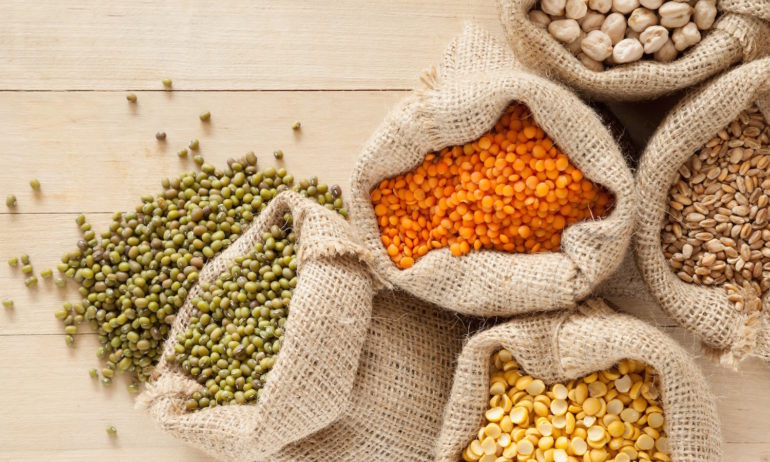Geneva, 8 Oct (Kanaga Raja) – The international prices of a basket of key agricultural food commodities rose in September, mainly driven by much firmer prices for vegetable oils and cereals, the UN Food and Agriculture Organization (FAO) has said.
According to the FAO, its Food Price Index (FFPI) averaged 97.9 points in September 2020, up 2.0 points (2.1 percent) from August and 4.6 points (5.0 percent) higher than its value in September 2019.
The September value, the highest since February 2020, represented the fourth consecutive monthly increase, said FAO.
“Much firmer prices of vegetable oils and cereals were behind the latest rise in the FFPI. By contrast, prices of dairy products remained generally stable, while those of sugar and meat retreated from their August levels,” it added.
The FAO Food Price Index is a trade-weighted index that tracks the monthly change in the international prices of a basket of key food commodities.
According to FAO, its Cereal Price Index averaged 104.0 points in September, up 5.0 points (5.1 percent) from August and 12.5 points (13.6 percent) above its value in the corresponding month last year.
The rise in September represented the third month of consecutive increase, it said.
“Reflecting brisk trade activity amidst increased concerns over production prospects in the southern hemisphere and dry conditions adversely affecting winter wheat sowings in many parts of Europe, wheat prices rose sharply in September.”
International maize prices surged as well, responding to cuts in production prospects, especially in the European Union (EU), and the expectation of a significant drop in supplies in the United States of America, following the downward revision of the country’s maize carry-overs from the previous season, said FAO.
It noted that strong import demand from China kept sorghum prices on the rise for a third consecutive month, while international rice prices subsided by 1.4 percent, as 2020 crops entered or approached the harvesting stage in northern hemisphere suppliers, while fresh demand slowed.
According to FAO, its Vegetable Oil Price Index averaged 104.6 points in September, up 5.9 points (or 6.0 percent) from August and marking an eight-month high.
The further increase of the index mainly resulted from rising palm, sunflower seed and soy-oil quotations.
“International palm oil prices rose markedly for the fourth consecutive month, tied to fresh global import demand as well as lower than expected inventory levels in Malaysia and uncertainties regarding the pace of production in Southeast Asia in the coming months,” said FAO.
At the same time, it added, international sunflower oil prices increased sharply in September, primarily fuelled by deteriorating crop prospects in the Black Sea region.
Meanwhile, international prices of soy-oil continued rising, supported by the slow pace of crushings in South America and firm demand from the bio-diesel industry in the United States of America.
The FAO Dairy Price Index averaged 102.2 points in September, almost unchanged from August and up 2.5 points (2.5 percent) from the corresponding month last year.
According to FAO, moderate increases in price quotations for butter, cheese and skim milk powder (SMP) were offset by a fall in those of whole milk powder (WMP), resulting in a nearly stable index in September.
“Butter prices increased due to high demand for near-term deliveries and reduced processing in Europe, while cheese quotations rose slightly, reflecting a rise in import demand, coupled with an expanded internal demand in Europe despite continued weakness in food services sales,” it said.
Quotations for SMP rose as well, on account of somewhat tight supplies in Europe, where milk production is seasonally declining.
On the other hand, WMP prices fell, as import demand eased, especially from the Middle East, amid near-peak seasonal production in Oceania.
According to FAO, its Meat Price Index averaged 91.6 points in September, down slightly (0.9 percent) from August.
FAO said that this continues the general declining trend observed since January this year. It noted that year-on- year, the index is down 9.5 points (9.4 percent) from its value in the corresponding month last year.
In September, quotations for pig meat fell, partly influenced by China’s decision to impose a ban on imports from Germany following the detection of African swine fever (ASF) among wild boars, while ovine (lamb and mutton) meat prices waned on high seasonal supplies from Australia.
In contrast, quotations for poultry meat rose, as a result of the fast pace of international sales and limited exportable supplies from Brazil.
Bovine meat prices remained stable, as an increase in the quotations of Brazilian products was nearly offset by a decline in those from Australia, largely reflecting the underlying import demand conditions facing each market, said FAO.
The FAO Sugar Price Index averaged 79.0 points in September, down 2.1 points (2.6 percent) from August.
FAO attributed the decline in international sugar prices mainly to reaction to expectations of a global sugar production surplus for the new 2020/2021 season.
“The latest indications point to significant production recovery in India, the world’s second largest sugar producer, as well as a strong output in Brazil, the world’s largest exporter, following the decline registered last season,” it said.
Furthermore, the persisting weakness of the Brazilian Real against the United States dollar contributed to lowering world sugar prices, it added.
GLOBAL CEREAL MARKETS REMAIN RESILIENT
In a separate Cereal Supply and Demand Brief, FAO has forecast global cereal markets to remain adequately supplied in 2020/21 despite this month’s downward revisions to production and inventories.
“With trade in cereals seen expanding in 2020/21, global cereal markets continue to demonstrate their resilience amidst the challenges and uncertainty caused by COVID-19,” said FAO.
FAO trimmed its latest forecast for world cereal production in 2020 by 2.5 million tonnes since the previous report in September and now stands at 2,762 million tonnes.
At this level, the global cereal output would remain at an all-time high, exceeding the previous year’s out-turn by as much as 2.1 percent (55.7 million tonnes), it said.
“This month’s downward revision reflects lower expectations for the global coarse grains output, with production now pegged at 1,488 million tonnes, down 0.5 percent (7.2 million tonnes) from the previous report.”
The bulk of the cutback reflects smaller projected maize crops in the EU, the Russian Federation and Ukraine, due to recent dry weather conditions that adversely impacted crops, said FAO.
FAO has also lowered its forecasts of maize production in China and the United States of America (USA) on account of damage caused by extreme weather events.
Nevertheless, it said that this year’s maize output in the USA is still seen to surpass last year’s harvest by a significant margin.
An upturn in prospects for world barley production, raised by 1.6 percent to 156.6 million tonnes this month, has prevented a larger cut to the global coarse grains production forecast.
The improved outlook for barley production is mainly associated with better yield prospects in the EU and the Russian Federation, said FAO.
FAO has revised upward its forecast for world wheat production in 2020 by nearly 5.0 million tonnes (0.6 percent) to a record high level of around 765 million tonnes.
The bulk of the upward revision concerns Australia, where continued conducive weather has led to better yield prospects and reaffirmed earlier expectations of a substantial rebound in production following two consecutive drought-affected harvests, it said.
“Higher than previously anticipated yields in the EU and the Russian Federation also contributed to increases in wheat production forecasts, further propping up global production prospects.”
FAO said that larger than earlier anticipated plantings have boosted the production outlook for rice for Mali, Sri Lanka, the USA and, in particular, India.
However, it added, upgrades for these countries were offset by lower forecasts for Egypt, Pakistan and Thailand, which could see tight water availabilities for irrigation precluding a marked off-season production recovery this season.
In light of this, FAO said that its forecast for world rice production in 2020 remains essentially unchanged since September at 509.1 million tonnes, up 1.6 percent year-on-year and setting a new record.
FAO’s forecast for world cereal utilization in 2020/21 stands at 2,744 million tonnes, down 2.8 million tonnes since September but still 54.5 million tonnes (2 percent) above the estimate for 2019/20.
Total utilization of coarse grains is forecast at 1,477 million tonnes, representing a 41 million tonne (2.9 percent) increase over the previous season’s level despite a cut of 2.7 million tonnes since September.
Making up the bulk of the downward revision, FAO’s forecast for maize utilization has been reduced on less robust demand growth for industrial and feed uses, especially in the EU and USA.
In tandem with reduced feed use expectations for maize, greater anticipated feed use of barley has pushed up the barley utilization forecast to some 6 million tonnes (4.1 percent) above last year’s level, as higher maize prices are seen to increase barley’s competitiveness in feed rations.
At 757 million tonnes, FAO’s forecast for total wheat utilization is nearly unchanged from September and 5.8 million tonnes higher than in 2019/20, driven by a rise in consumption in Asia, especially China and India.
Despite a slight downward revision since September, expanding food intake is predicted to drive a 1.5 percent annual increase in world rice utilization in 2020/21 to a new record level of 510.5 million tonnes, said FAO.
FAO has forecast world cereal stocks by the close of seasons in 2021 at 890 million tonnes, 5.9 million tonnes (0.7 percent) down from the September forecast, but still 16.7 million tonnes (1.9 percent) above the opening level and representing a record high.
FAO said this month’s downward revision to stocks mainly rests on an almost 10.0 million cut in the global maize inventory forecast, canceling the previously anticipated increase.
Following the recent official downward revision to the 2020/21 maize opening stocks (i.e. carry-overs from 2019/20 season) in the USA, the forecast for the country’s maize inventories by the end of the current season has been trimmed.
In addition, downgraded production prospects in the EU and China combined with robust feed demand have resulted in lower inventory forecasts, said FAO.
On the other hand, better production prospects have lifted the expectations for higher global wheat inventories, which are now predicted to reach 284.8 million tonnes, some 10 million tonnes (3.7 percent) above their opening levels, but still below the 2017/18 record level.
However, much of the projected wheat inventory growth is likely to be concentrated in China, with global wheat stocks excluding China expected to register a small decline, said FAO.
Primarily reflecting higher than earlier anticipated carry-overs in India, FAO’s forecast for world rice stocks by the close of 2020/21 has been raised by 700,000 tonnes to 182.0 million tonnes, essentially on par with the previous season, which stood out as the second highest volume on record.
FAO has forecast global trade in cereals to reach an all-time high of 448 million tonnes in 2020/21, 6.2 million tonnes higher than the previous forecast in September and 10.6 million tonnes (2.4 percent) above the 2019/20 record level.
Coarse grains trade in 2020/21 is likely to expand by 7.2 million tonnes (3.5 percent) from 2019/20, supported by stronger import demand for maize, barley and sorghum, said FAO.
“Higher maize imports are forecast for China amidst soaring domestic prices, as well as for the EU, in view of the anticipated fall in production this year.”
On the export side, FAO said a strong rebound in maize exports is expected for the USA, while maize shipments from Brazil and Argentina are forecast to fall from their 2019/20 record levels.
Following an upward revision this month of 3 million tonnes, global wheat trade in 2020/21 is now forecast to remain close to the 2019/20 level.
Greater supplies in several major exporters, including Australia, the EU and the Russian Federation, are expected to meet the increased demand from North Africa and Asia, especially China and Egypt, said FAO.
Rekindling demand in Africa is predicted to sustain a 6.9 percent expansion in world rice trade in 2021 (January- December) to 47.1 million tonnes, unchanged from the September expectations.
Among suppliers, consistent with the improved supply prospects, export forecasts were raised for India to an all- time high this month, but this was offset by outlook cuts made for Pakistan, Viet Nam, and especially Thailand, said FAO.- Thurd World Network
Published in SUNS #9207 dated 9 October 2020




